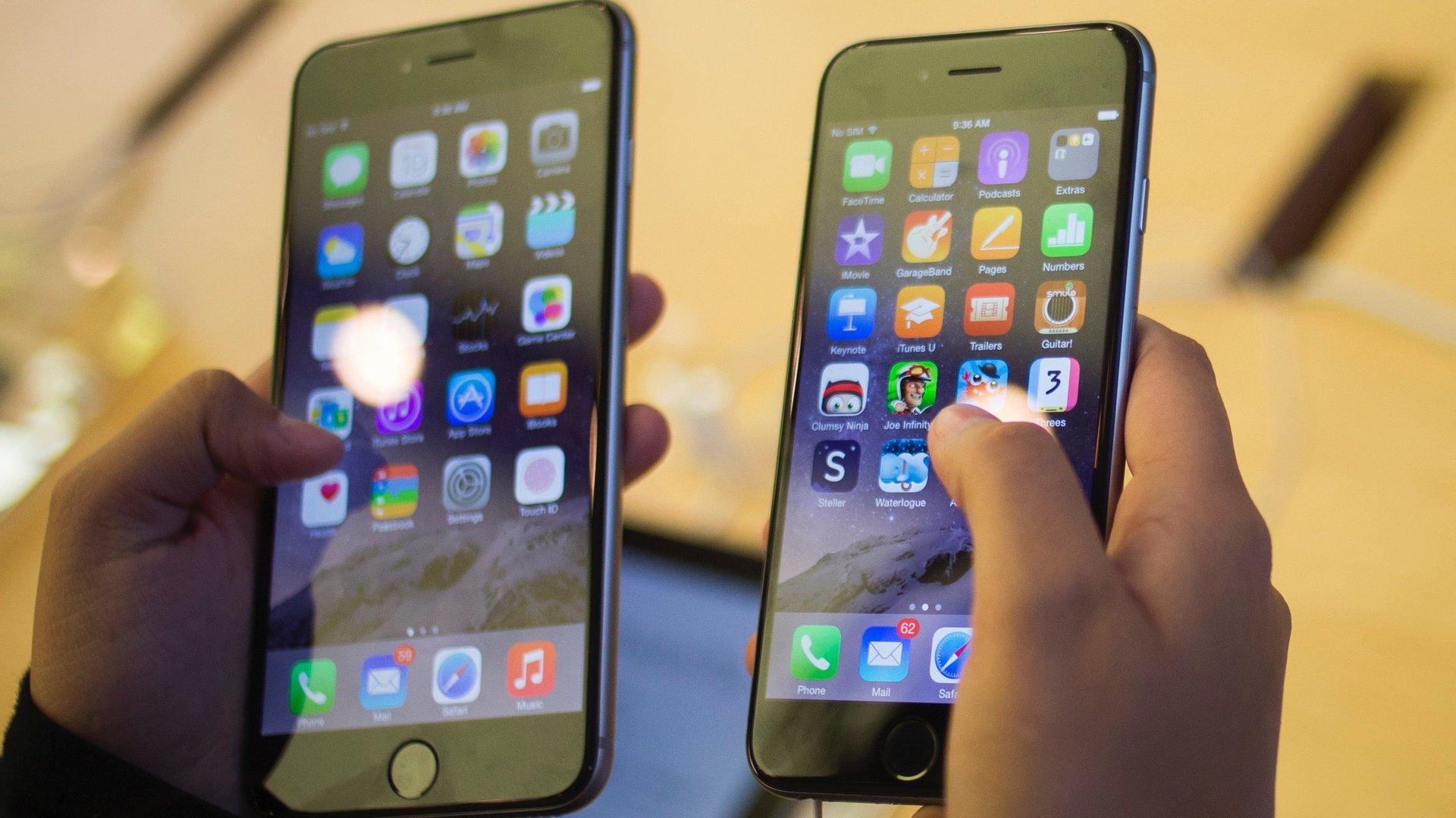People are suing Apple over the most annoying problem with the iPhone: “touch disease”
Across North America, iPhone owners have become increasingly disgruntled by the device’s spotty touchscreen functionality.


Across North America, iPhone owners have become increasingly disgruntled by the device’s spotty touchscreen functionality.
The first sign of “touch disease” is a flickering gray bar that appears across the top of the iPhone 6 or 6 Plus screen. Over time, the touchscreen loses functionality. Some reports suggest that the issue is caused by dropping the phone on the ground or “bendgate”— the 6 Plus tends to bend if a user sits down with it in their pocket—but there are also many reported cases where there are no signs of physical damage. A nationwide class action lawsuit in the US filed in late August alleges that Apple concealed “a material design defect that causes the touchscreens on the iPhones to become unresponsive.”
In a bid to make the 6 and 6 Plus models sleeker, the Cupertino giant failed to “properly [secure the touch IC chips] to the logic board and, as a result of foreseeable and reasonable use by consumers, fail from normal wear and tear,” the lawsuit states. The plaintiffs claim that the touch IC chips, which communicate with the motherboard, are unable to convert touch commands into language the machine understands due to an engineering flaw: loose or broken connections. Unlike earlier models where there was underfill that acted like strong glue, or a shield covering the logic board, the 6 and 6 Plus leave these units exposed and vulnerable to dysfunction.
“Touch disease” is currently the single biggest daily iPhone service issue, accounting for almost 11% of Apple Store repairs, according to Apple Insider.
Apple has been accused of fraud, negligent misrepresentation, and breach of implied warranty by three plaintiffs who are not only irked by failing screens, but also by the manufacturer’s pricey remedy. Each user was quoted a repair cost upwards of $300. Their options were to either incur the charges or change their handsets. Reinstalling software did nothing to alleviate the problem for one of the plaintiffs, whose screen continued to freeze up 50 to 60% of the time.
Genius bar employees have admitted to being aware of the problem but are unable to fix it. Since Apple doesn’t take liability for devices after they have been fixed by a third-party, Apple Store employees cannot refer outside help either. Independent technicians who tried explaining the cause behind the defect in a forum were censored and banned from the company’s online support communities. Across the border, Canada and Quebec-based iPhone 6 and 6 Plus users also filed class action lawsuits for Apple’s poor handling of the “touch disease” in September.
And if that wasn’t enough bad news, an iPhone 6 Plus recently exploded in a high school student’s back pocket.